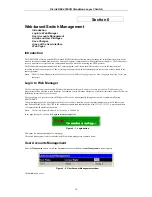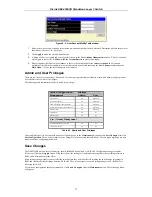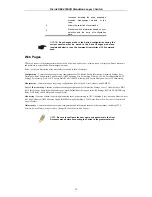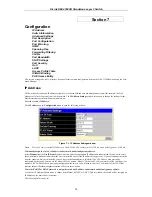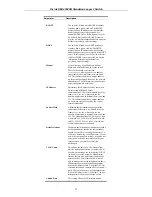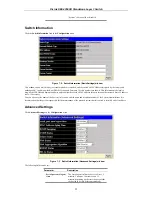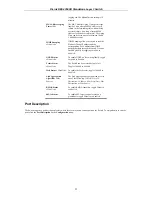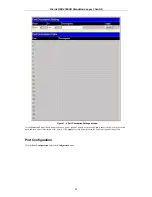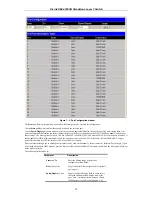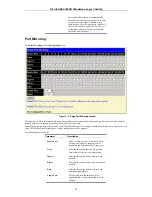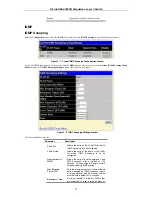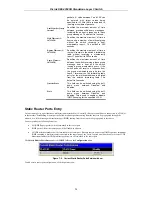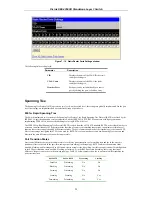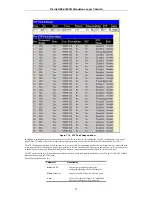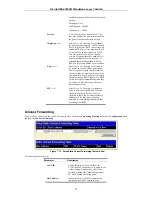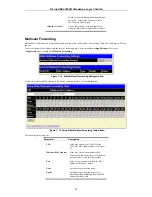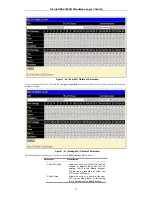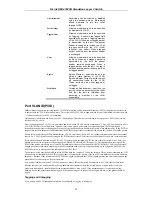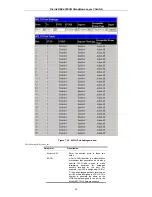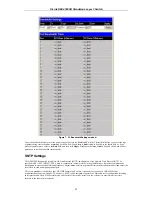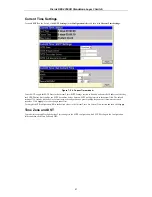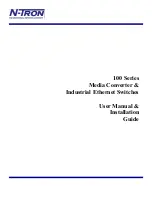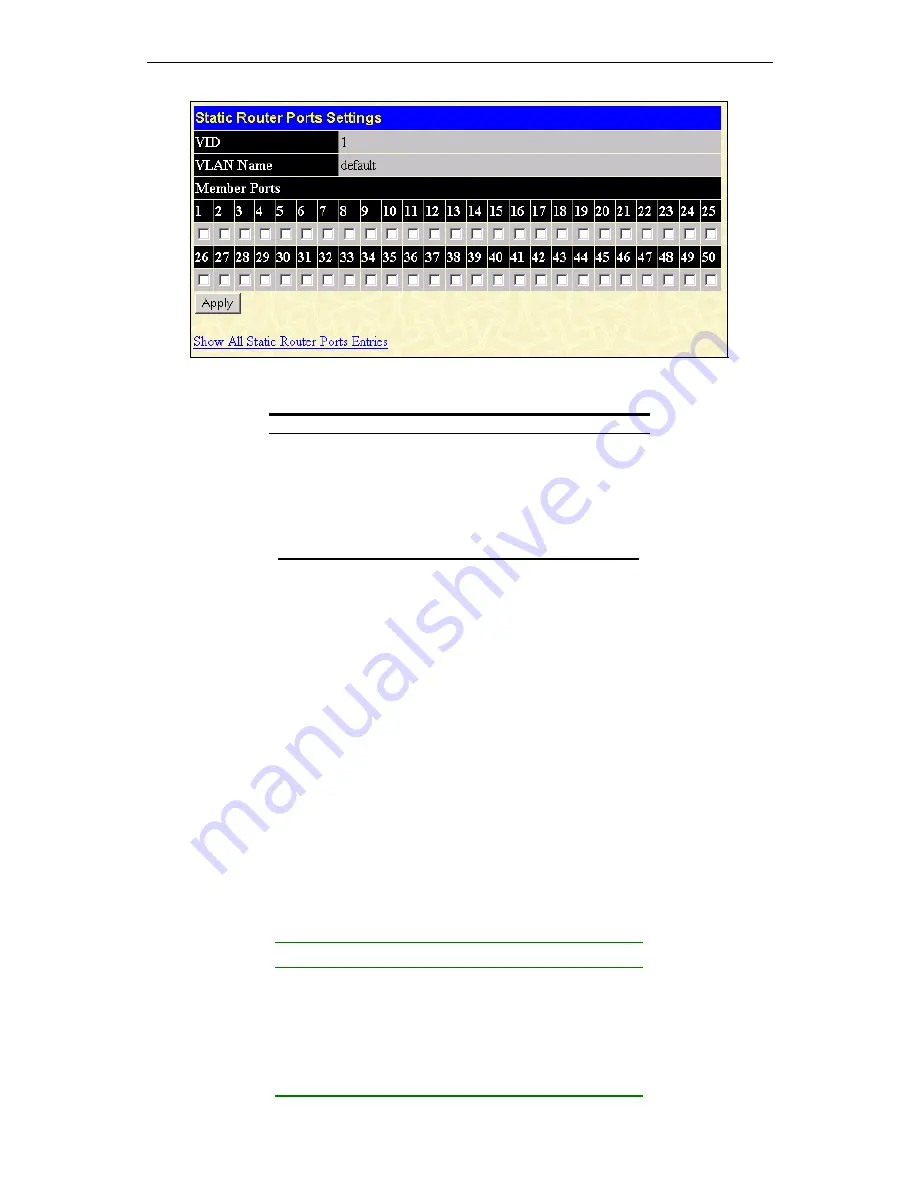
D-Link DES-3350SR Standalone Layer 3 Switch
29
Figure 7 - 10. Static Router Ports Settings window
The following fields are displayed:
Parameter
Description
VID
Displays the name of the VLAN ID the static
router port belongs to.
VLAN Name
Displays the name of the VLAN the static
router port belongs to.
Member Ports
Each port can be set individually as a router
port by clicking the port’s click-box entry.
Spanning Tree
The Spanning Tree Protocol (STP) operates on two levels: on the switch level, the settings are globally implemented. On the port
level, the settings are implemented on a user-defined Group of ports basis.
802.1w Rapid Spanning Tree
The Switch implements two versions of the Spanning Tree Protocol, the Rapid Spanning Tree Protocol (RSTP) as defined by the
IEEE 802.1w specification and a version compatible with the IEEE 802.1d STP. RSTP can operate with legacy equipment
implementing IEEE 802.1d, however the advantages of using RSTP will be lost.
The IEEE 802.1w Rapid Spanning Tree Protocol (RSTP) evolved from the 802.1d STP standard. RSTP was developed in order to
overcome some limitations of STP that impede the function of some recent switching innovations, in particular, certain Layer 3
function that are increasingly handled by Ethernet switches. The basic function and much of the terminology is the same as STP.
Most of the settings configured for STP are also used for RSTP. This section introduces some new Spanning Tree concepts and
illustrates the main differences between the two protocols.
Port Transition States
An essential difference between the two protocols is in the way ports transition to a forwarding state and the in the way this
transition relates to the role of the port (forwarding or not forwarding) in the topology. RSTP combines the transition states
disabled, blocking, and listening used in 802.1d and creates a single state: discarding. In either case, ports do not forward packets;
in the STP port transition states disabled, blocking, or listening, or in the RSTP port state discarding, there is no functional
difference, the port is not active in the network topology. Table 5-1 below compares how the two protocols differ regarding the
port state transition.
802.1d STP
802.1w RSTP
Forwarding
Learning
Disabled Discarding
No
No
Blocking Discarding
No
No
Listening Discarding
No
No
Learning Learning
No
Yes
Forwarding Forwarding
Yes
Yes
Содержание DES-3350SR
Страница 1: ...D Link DES 3350SR Standalone Layer 3 Switch User s Guide...
Страница 80: ...D Link DES 3350SR Standalone Layer 3 Switch 70 Figure 7 57 The Client...
Страница 138: ...D Link DES 3350SR Standalone Layer 3 Switch 128 Click Apply to implement changes made...
Страница 160: ...D Link DES 3350SR Standalone Layer 3 Switch 150 Figure 10 33 PIM Neighbor Table...
Страница 188: ......


